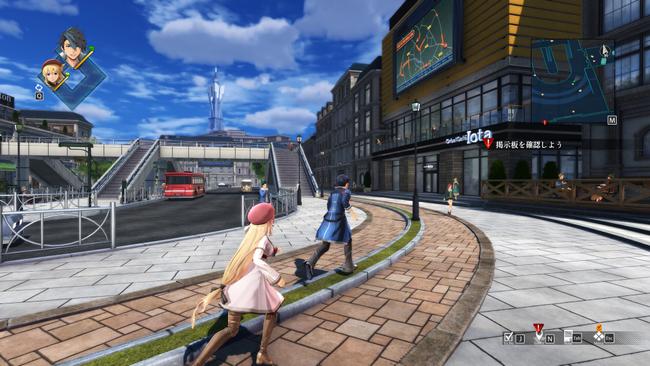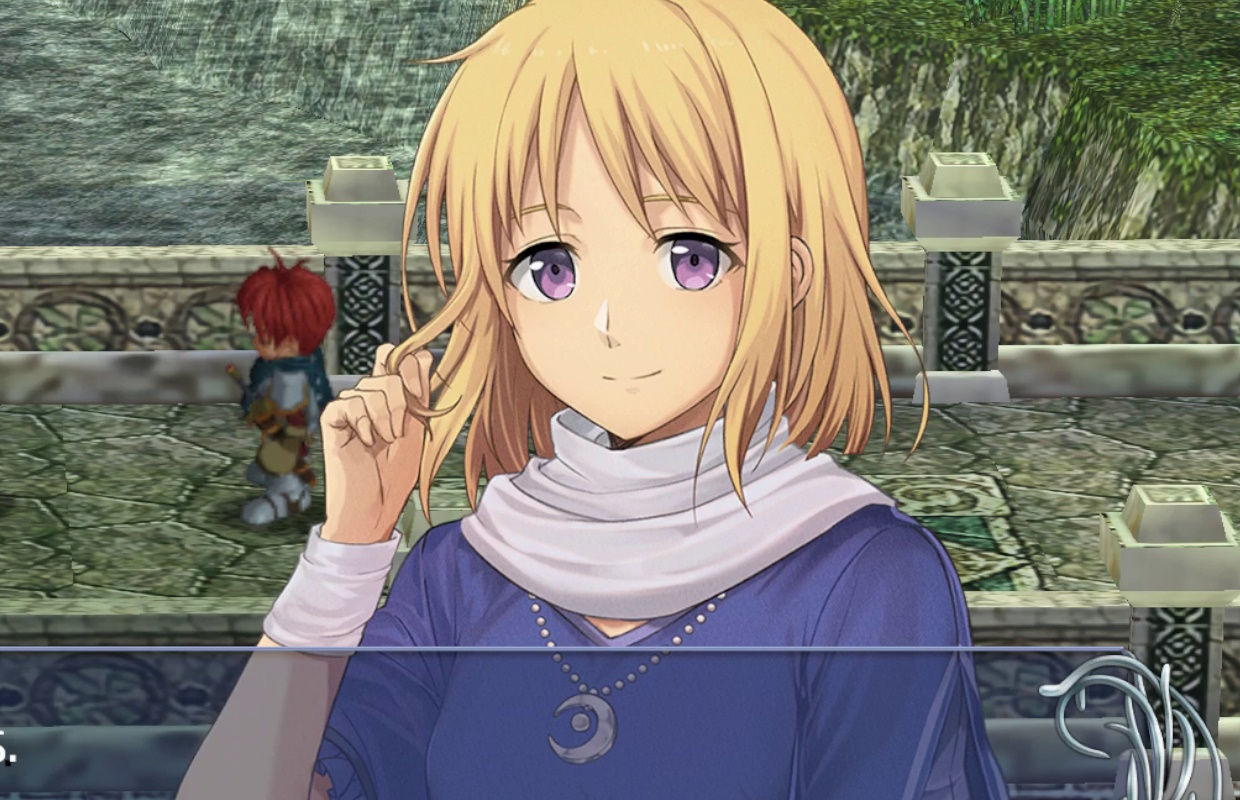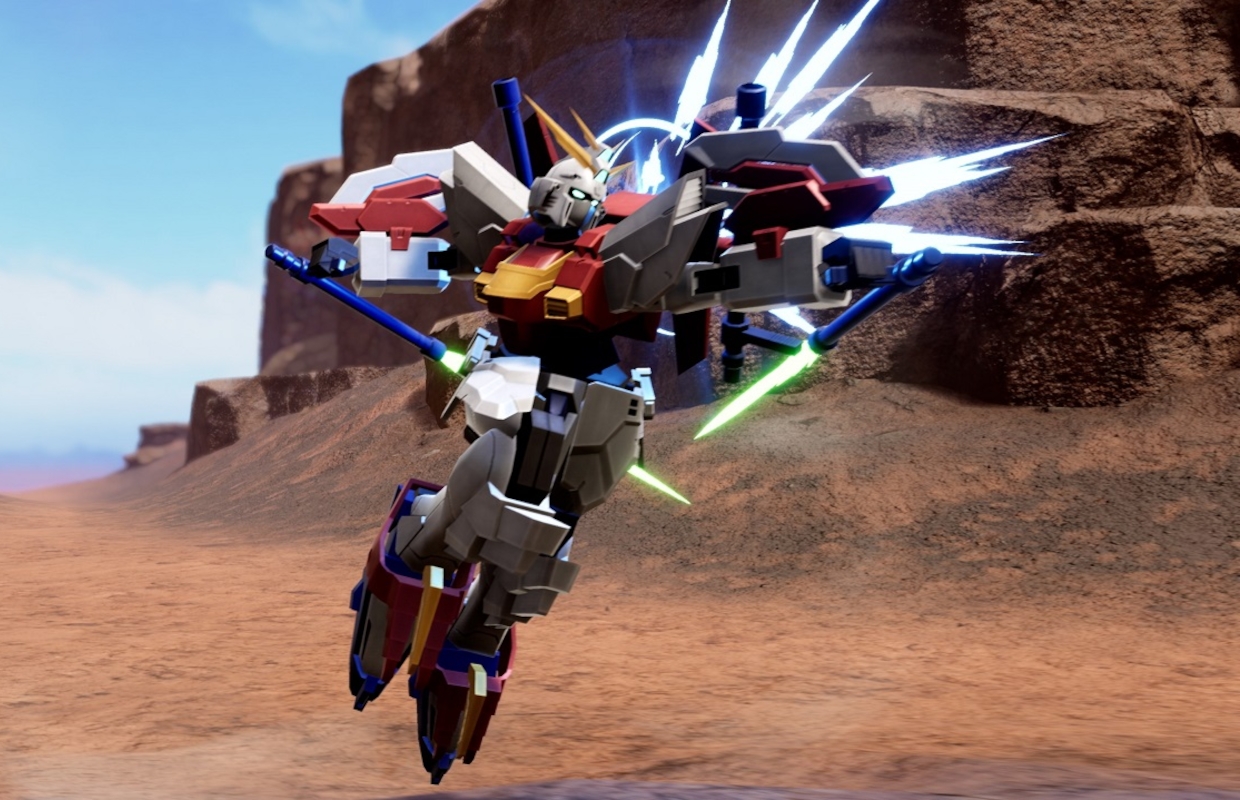I have always been a sucker for epic narratives that span multiple entries, where the big payoff doesn’t come at the end of the entry, but instead comes years or even decades later. Things like Brandon Sanderson’s Cosmere universe of books or the convoluted tale of look-alikes in Kingdom Hearts are my comfort food. Still, ever since 2019 with the PlayStation 4 port of Trails of Cold Steel, Zemuria has captured my heart and quickly become one of my favorite fictional worlds. That’s why I have eagerly been anticipating The Legend of Heroes: Trails Through Daybreak, the start of the next big story arc set in the Republic of Calvard.
Advertisement. Keep scrolling for more
Before going further, I think it’s important to answer a question that I am sure will be asked and needs to be addressed – is Trails Through Daybreak a good place to jump into the series? In general, jumping in at the start of an arc (such as Trails in the Sky FC, Trails from Zero, or Trails in Cold Steel) is always preferred over one of their subsequent entries. Daybreak serves as a passable option for starters, but it is far from being what I would recommend. In my opinion, your best options would be the Steam release of Trails in the Sky FC or Trails from Zero, as the latter is also available on modern consoles, but won’t spoil as much of previous titles as Cold Steel does – all of this comes from someone who got his start in the series with Trails in Cold Steel. That said Daybreak is probably the best jumping-in point as far as recent entries go, for those wanting to get a taste of what the Trails series offers.
Picking up a year and a half after the events of the previous entry, Trails into Reverie, Trails Through Daybreak puts you in the shoes of Van Arkride, a Spriggan mercenary. After accepting a seemingly innocuous job trying to locate a Genesis, a keepsake of heroine Agnes’ late great-grandfather, Van is thrust into events that will see him uncovering the mysterious Alamata. This organized mafia has been gaining a foothold in Calvard – and Van soon finds himself at the center of events that will shape the region.
Daybreak introduces you to a varied cast of characters working alongside Van at his business, Arkride Solutions. They include a 13-year-old jaeger who is naive about the world at large, a sultry actress, a concierge dressed in a maid outfit from a powerful weapons manufacturer, the previously mentioned Agnes, and others. Longtime Trails fans can also look forward to surprising cameos from familiar faces, including some who appear in 3D for the first time in series history.
For another series first, Trails Through Daybreak pulls back the curtain on the Republic of Calvard – the large nation on the eastern side of Crossbell that was often in conflict with Erebonia in prior games and home to groups such as the Heiyue crime syndicate. Going into the game, I knew that Calvard was massive, and while much had been alluded to previously, I still wasn’t expecting just how varied the locations would be in Daybreak. While Calvard’s capital of Edith feels like your more standard “modern metropolis” – a feeling that could be shared with the likes of Crossbell and Heimdallr – I was surprised at the variety of locations found in Calvard. Daybreak took me to places like a bustling city in a desert oasis, as well as Longlai with its heavily Asian-inspired aesthetic. Such varied environments helped to emphasize just how massive Calvard was, and I appreciated it immensely.
Daybreak plays out similarly to other Trails titles, being broken down into about six and a half chapters, which will take you across the surprisingly varied regions of Calvard. Each chapter will present you with numerous side quests – called 4SPGs – along with the main missions that progress the main story, all while giving you an excellent opportunity to chat with the many townsfolk. For being skippable side quests, some were incredibly poignant and emotional, with some being downright heartwrenching, such as having to tell someone their loved one had been killed or trying to talk someone out of committing suicide. Falcom’s dedication to the regular inhabitants of its world is part of what I love about these games, and it always helps make the places you visit feel so much more alive. Every regular NPC you’ll find on the street is a named character, instead of the more commonly found approach of simply naming everyone “Townsfolk” or “Sad Man.”

Combat receives a more substantive update with the new action-based field combat mode, as well as an adjusted but still-familiar turn-based mode. With the action mode, it feels like an evolution of the existing system from the other titles where you can smack enemies in the field, and if you are a high enough level over them, will instantly kill them without getting into combat – albeit for a reduced reward of Septith and experience. While this is an option to dispatch enemies altogether, unless the enemies are weaker than you, utilizing the action mode is best served as a manner to break an enemy’s guard, stunning them, and then quickly switching into the turn-based combat mode. Doing this causes foes to be stunned for a few turns, allowing you to get some free turns in. Taking advantage of this made some later fights easier to contend with, and it is something you should use as much as you can. A part of me wishes that the system was more fleshed out or made so that you could play through the entire game just in an action RPG style or try to take out bosses in this more restrictive way.
Advertisement. Keep scrolling for more
When it comes to turn-based combat, much of it will feel pretty similar to the other games. You are given access to each character’s unique craft attacks, S-crafts, and hurling arts. The two main additions in Daybreak are the SCLM (Shard Circular Linked Metafield) and S(Shard)-Boosts. Starting with the former, the SCLM allows characters to assist one another by being in close proximity to one another when they perform their attacks. At first, this may sound similar to the system found in the Cold Steel and Reverie games, but the SCLM feels a lot less powerful than the previous Link system. In place of the big attacks of previous games, now by being close to one another, linked characters will either boost an attacking character’s attacks or they will follow up with a basic attack of their own. The most important benefit that SCLM provides is that it can increase the chance that Shard Skills will activate, but more on these in a bit.
On the other hand, I found S-Boosts to be far more useful and mandatory to utilize in the tougher fights in Daybreak. Spending a bar of the new boost gauge will grant a character enhanced stats and other buffs for a set number of turns. The stat bonuses that you receive are determined by the Holo Cores (Daybreak’s version of Master Quartz) in their Xipha’s (Daybreak’s Arcus/Orbment device). I was particularly fond of the ones that made my dodgy evasion boy an untouchable counter-attacking beast.
.jpg)
On the topic of Orbments and Quartz, Daybreak’s Xipha is an odd mix of the familiar and brand-new that may give returning players a bit of an adjustment period; I know I did. The Xipha is, in essence, comprised of three main parts – the Holo Core, the Arts Driver, and the Quartz.
Quartz is handled a bit more like a pre-Cold Steel approach, which is more for adjusting stats and adding effects to your attacks, each with a certain number of elemental charges. This is opposed to Cold Steel’s approach, where a Quartz can give you a specific spell (very Materia-like). The Elemental Charges will unlock different special skills, known as Shard Skills, depending on the values of each element in a given row – these skills can add additional damage of an element to your basic attacks, reduce casting times for arts of its respective element, or field effects such as showing enemies and chests on the map.
Next, we have the Holo Core, which can be thought of as Daybreak’s version of a Master Quartz, just without having an Art tied to it. Instead, each Holo Core provides a certain amount of extra EP to use, a boost to your Arts’ strength, and dictates the bonuses you earn when you use the S-Boost. These cores will level up, giving you better bonuses the higher their level, too. If you’re keeping track, you may be wondering how you assign Arts to your characters; well, that is where the Arts Driver (and the last part of the Xipha) comes into play.
Arts Drivers are special little chips that you will slot in, independent of your Quartz and Holo Cores, that come with a specific set of Arts along with unlockable slots for you to put in Plugins that contain a specific art. These Plugins can be bought from vendors or received as rewards for completing various tasks, such as increasing your Spriggan rank. The best part is that you don’t need to have multiple copies of a Plugin in order to assign an Art on multiple characters. This means once you get that powerful healing art as a plugin, you can have all your characters access it at once. As a bit of a completionist, I have spent more time than I care to admit in earlier games grinding the components or Mira to get the powerful quartz in previous games, so I had a full set for all my characters. It was a big relief that I didn’t have to go through that again for Daybreak.
.jpg)
If all of this sounds overwhelming, I agree with you. With the added customization and tweaks you can make, I never fully gelled with the underlying mechanics of the combat, as I often felt like I was trying to juggle one too many balls in the air to micromanage my party. It definitely took some getting used to after the more straightforward mechanics found in the Crossbell and Cold Steel games.
In my experience, Daybreak’s combat is tuned in such a way that it’s a bit more difficult this time around to configure an overpowered party that stomps through the game’s challenges. One of my favorite things to do in the earlier games was to find ways to “break” the system, like stacking delay so enemies couldn’t act or devising a rotation where I could take unlimited turns, and I never quite found that same satisfaction in Daybreak. Don’t get me wrong, good on Falcom and NIS for making a more balanced system, and I’m sure avenues to knock down that balance have been found.
Advertisement. Keep scrolling for more
The cast of playable and support characters in Trails games is one of this series’ most defining and memorable aspects, and Daybreak is no different. The brightest star and my favorite part of Trails Through Daybreak comes from the arc’s main protagonist, Van Arkride. Van is 24 during the events of Daybreak and already has a wealth of experience, knowledge, and contacts, which is a drastic departure from all of the other protagonists at the start of their respective arcs. I find that Van very much mirrors the audience that Trails Through Daybreak is for, a vast majority of which is now 11 games deep in this story, aren’t fresh faces and ignorant of what is going on in Zemuria. The overall demeanor and responses of someone in their mid-20s differ drastically from someone in their teens or just starting out in a job, and that is captured beautifully with Van. Much like how a Spriggan balances on the morally gray edge of the law, Van balances on the borderline of his “no bullshit” attitude and caring a lot, and it all has made me respect and love the character more.
The rest of the main roster is more of a mixed bag, with some landing better for me than others. The standouts that I enjoy the most tended to be the ones that had the best interactions with Van, with those being the horny playboy Aaron that loves to poke at Van’s age, the lovely actress Judith who really needs to work on her acting skills, and Feri the naive young jaeger whose limited life experiences results in some amusing responses throughout the game. What makes these three, in particular, stand out for me are the interactions that they have with each other. Except for Feri, they are all on the older end (though still younger than Van) but bring more to the table than others in the party do.
.jpg)
Unfortunately, other characters in the cast I felt less strongly about. I had bigger hopes and expectations for Agnes, the main female protagonist, going into the Daybreak. When all was said and done, she came across as exciting as vanilla ice cream, offering little in the way of personality, surprises, or big reveals that elevate her past simply being the “MacGuffin holder.” I didn’t hate her; she never did anything that annoyed me. I just was hoping for something a bit more from her. I want her role and personality to evolve and become more meaningful in Trails Through Daybreak II and Farewell, O Zemuria so that she can stand toe-to-toe with the other rockstar heroines the series has.
The villains in the Trails games, along with their complex and intricate plots, have always been a highlight for me when playing these games, but unfortunately, this time around, Daybreak stumbles a bit. In a world with threats and masterminds like Ouroboros, Heiyue, and even previous ones like the DG Cult, the motives behind the scenes have always seemed well thought out and genuinely devious to me. In contrast, while I can’t be specific for spoiler reasons, I found the plan by Daybreak’s Almata Mafia to have some odd flaws and holes in its logic and execution that just didn’t work for me. Despite this, some of the villains, such as the Executives of Almata and its leader Dantes, had some surprising revelatory moments in story, which were among the best in Daybreak.
I came away from Trails Through Daybreak with many unanswered questions and mysterious hints dropped in the game’s last moments. Despite my issues with some of the characters, Almata, and the underlying Xipha system, I still enjoyed my time at Calvard, seeing old friends and meeting new ones, and I am eager to return. The Trails series is one of my favorite long-form fictional works, and I look forward to the months and years’ worth of discussions and seeing how all the new teases and hints end up paying off in Daybreak II, Kai no Kiseki, and beyond.
7




